Giovanna's eye on February 13
Diese Saison heißen sie Alenga, Benilde, Chanda, Dando, Ethel, Funso und wie jetzt gerade aktuell Giovanna.Manch einer mag sich wohl fragen wie es eigentlich zur Namensgebung von Zyklonen kommt, denn um ehrlich zu sein, nach Eisbären sind sie ganz sicher nicht benannt...))
Von Brice Allenbrand bekam ich vor wenigen Tagen eine Mail, er hat 2 englischsprachige Artikel sehr schön auf Französisch zusammengefasst, da das gerade sehr gut passt, nehme ich dies dankenswerterweise zum Anlass, mich ebenfalls dem Hintergrund der Namensgebung ein wenig zu widmen.-
This season they are called Alenga, Benilde, Chanda, Dando, Ethel, Funso, and as currently, Giovanna. Some of you may well ask what it really behind the naming of cyclones, because to be honest, polar bears have nothing to do with it ...))
A few days ago, I got a mail by Brice Allenbrand, he has nicely summarized 2 English articles in French, coming just in time to take up the opportunity with thanks and to dedicate myself a little to the background of the cyclone naming business.-
Cette saison, ils sont appelés Alenga, Bénilde, Chanda, Dando, Ethel, Funso et, comme actuellement Giovanna. Quelqu'un peut bien se demander d'où viennent tous ces noms pour des cyclones, car pour être honnête, c'est sûr, ils ne sont pas nommés pour des ours polaires ...))
Brice Allenbrand m'avait envoyé dernièrement un courrier, en résummant (en français) très bien 2 articles originairement en anglais, à cause de son actualité, je saisis cette occasion pour également me consacrer un peu à l'arrière-plan des noms des cyclones.Et biensûr, avec un grand merci à Brice.
This season they are called Alenga, Benilde, Chanda, Dando, Ethel, Funso, and as currently, Giovanna. Some of you may well ask what it really behind the naming of cyclones, because to be honest, polar bears have nothing to do with it ...))
A few days ago, I got a mail by Brice Allenbrand, he has nicely summarized 2 English articles in French, coming just in time to take up the opportunity with thanks and to dedicate myself a little to the background of the cyclone naming business.-
Cette saison, ils sont appelés Alenga, Bénilde, Chanda, Dando, Ethel, Funso et, comme actuellement Giovanna. Quelqu'un peut bien se demander d'où viennent tous ces noms pour des cyclones, car pour être honnête, c'est sûr, ils ne sont pas nommés pour des ours polaires ...))
Brice Allenbrand m'avait envoyé dernièrement un courrier, en résummant (en français) très bien 2 articles originairement en anglais, à cause de son actualité, je saisis cette occasion pour également me consacrer un peu à l'arrière-plan des noms des cyclones.Et biensûr, avec un grand merci à Brice.
Here a list of Mauritius' historical cyclones of which only Darius can be identified as one with a male name
Tropische Wirbelstürme bekommen in erster Linie Namen, um die Kommunikation zwischen den Meteorologen und der allgemeinen Öffentlichkeit in Bezug auf Prognosen und Warnungen zu erleichtern. Wirbelstürme haben eine Lebensdauer, die eine Woche überschreiten können und einige dieser Phänomene können im gleichen Becken nebeneinander auftreten: unverwechselbaren Namen können die Verwechslungsgefahr in Bezug auf die Phänomene reduzieren.-
Tropical cyclones are named
to facilitate communication between forecasters and the general public
regarding forecasts and warnings during an episode of disturbance. Cyclones have a lifetime that can exceed one week and
several of these phenomena can coexist in the same basin: distinctive
names can
reduce the risk of confusion concerning the phenomena.-
"Les cyclones tropicaux sont dénommés afin de faciliter la
communication entre les prévisionnistes et le grand public
concernant les prévisions et des alertes lors d'un épisode perturbé.
Les cyclones ont une durée de vie qui peut dépasser une semaine et
plusieurs de ces phénomènes peuvent coexister dans le même bassin :
les baptiser permet donc de réduire le risque de confusion entre les
phénomènes."
Damages caused by San Ciriaco in Puerto Rico, 3369 people died
source
source
Am Anfang waren die Namen für Wirbelstürme willkürlich. Es gab kein Konzept und keine Liste, dennoch, seit mehreren hundert Jahren wurden viele Hurricans in der Karibik oft nach den jeweiligen Heiligen eines Tages benannt, an dem ein Hurricane auftrat, wie z.B. "Hurricane Santa Ana", der Puerto Rico mit außergewöhnlicher Gewalt am 26. Juli 1825 traf.-
In the beginning, storms were named
arbitrarily. There was no concept and no list, although for several
hundred years many hurricanes in the West Indies
were named after the particular saint's day on which the hurricane
occurred like "Hurricane
Santa Ana" which struck Puerto Rico with exceptional violence on
July 26, 1825.-
Au début, les tempêtes ont été nommés arbitrairement. Il n'y avait pas de concept et aucune liste, même si, pour plusieurs centaines d'années de nombreux ouragans dans les Antilles ont été nommés après le saint en particulier du jour quand un ouragan faisait son passage, comme "Santa Ana " qui a frappé Porto Rico avec une violence exceptionnelle le 26 Juillet, 1825 . -
18 September 1852 – 10 December 1922
has made himself a name for naming cyclones also after politicians he disliked
has made himself a name for naming cyclones also after politicians he disliked
Laut Dunn und Miller (1960) war es der australische Metereologe Clement Wragge, der Wirbelstürme bereits Ende des 19. und Beginn des zwanzigsten Jahrhunderts zuerst benannte. Er war bekannt dafür ihnen auch die Namen von Politikern zu geben, die er nicht mochte. Auf diese Weise beschrieb der Meteorologe öffentlich einen Politiker (der vielleicht nicht großzügig mit dem Budget für den Wetterdienst war) als " verantwortlich für große Not" oder als "ziellos im Pazifik herumirrend". -
According
to Dunn and Miller (1960) it was the Australian forecaster Clement
Wragge who first named
cyclones already by the end of the 19th and begin of the twentieth
century. He attributed to tropical
cyclones "the names of politicians he disliked. In this way, the
meteorologist publicly described a politician (who perhaps was not
generous with the budget of the weather service) as' responsible of 'great distress' or' wandering aimlessly in the Pacific ".
"D'après Dunn et Miller (1960), c'est un prévisionniste
australien qui a le premier nommé un cyclone au début du XX ème
siècle. Il attribuait aux cyclones tropicaux "le nom des
politiciens qu'il n'aimait pas. De cette façon, le météorologiste
décrivait publiquement un homme politique (qui n'était peut-être
pas généreux avec le budget du service météorologique) comme
'responsable d'une grande détresse' ou 'errant sans but dans le
Pacifique' ".
Wilma
was the most intense tropical cyclone ever recorded in the Atlantic basin (October 2005)
source
was the most intense tropical cyclone ever recorded in the Atlantic basin (October 2005)
source
Während des Zweiten Weltkriegs, begannen Meteorologen der amerikanischen Luftwaffe und Marine, bei der Vorhersage tropischer Wirbelstürme über dem Pazifik, femininen Namen zuzuordnen (denen ihrer Freundinnen oder ihrer Frauen). Von 1950 bis 1952 wurden tropische Wirbelstürmen im Nordatlantik durch das phonetische Alphabet (Able-Baker-Charlie ... -Charlie Alpha etc ... auf Französisch-) identifiziert, aber im Jahre 1953 kehrte das amerikanische Institut für Meteorologie zu den weiblichen Namen zurück Unter dem Druck von feministischen Gruppen, wechselte die WMO und der US-Wetterdienst am Ende der 70er Jahre zu einer Liste, die auch Männer-Namen enthielt.-
During World War II, meteorologists from the American Air Force and Navy who were forecasting tropical cyclones over the Pacific gave feminine names to tropical cyclones (those of their girlfriends or their wives). From 1950 to 1952, tropical cyclones of the North Atlantic Ocean were identified by the phonetic alphabet (Able-Baker-Charlie ... Charlie Alpha etc ... in French), but in 1953 the Department of Meteorology American returned to the female names. Under pressure from feminist groups, WMO and the U.S. Weather Service switched to a list that also included men's names in 1979.-

During World War II, meteorologists from the American Air Force and Navy who were forecasting tropical cyclones over the Pacific gave feminine names to tropical cyclones (those of their girlfriends or their wives). From 1950 to 1952, tropical cyclones of the North Atlantic Ocean were identified by the phonetic alphabet (Able-Baker-Charlie ... Charlie Alpha etc ... in French), but in 1953 the Department of Meteorology American returned to the female names. Under pressure from feminist groups, WMO and the U.S. Weather Service switched to a list that also included men's names in 1979.-
Pendant la seconde guerre mondiale, les météorologistes de l'American Air Force (armée de l'air) et de la Navy (marine) qui faisaient de la prévision cyclonique sur le Pacifique donnaient des prénoms féminins aux cyclones tropicaux (ceux de leur petite amie ou de leur femme). De 1950 à 1952, les cyclones tropicaux de l'Océan Atlantique Nord ont été identifiés par l'alphabet phonétique (Able-Baker-Charlie etc... Alpha ... Charlie en français), mais en 1953, le Service de la Météorologie américain est revenu aux prénoms féminins. En 1979, l'OMM et le Service de la Météorologie américain sont passés à une liste qui comprenait également des prénoms masculins sous la pression de groupes féministes.
Here the list of historical cyclones in Rodrigues
Auf der nördlichen Halbkugel wechseln sich männliche und weibliche Vornamen in einem 6-Jahres-Zyklus ab, der sich dann wiederholt. Aber es ist möglich, dass aus Pietätsgründen ein Name vonder Liste gestrichen wird, wenn es in der Vergangenheit ein Zyklon war, der verheerende schäden angerichtet hat und um schlechte Erinnerungen zu vermeiden. Beispiele dafür sind: Katrina (USA, 2005), Mitch (Honduras, 1998) und Tracy (Darwin, 1974).
In
the northern hemisphere the first names alternate between male and female names in a 6-year cycle which is then repeated. But it is possible
that a name is banned from the list if ever it corresponded in the past to a
devastating cyclone for reasons of sensitivity to avoid bad memories.Infamous storm names such as Katrina (USA,
2005), Mitch (Honduras, 1998) and Tracy (Darwin, 1974) are examples for
this.-
"Dans l'hémisphère Nord les noms sont des prénoms et alternent
prénoms féminins et masculins sur un cycle de 6 ans qui se répète.
Mais il est possible qu'un nom soit banni à jamais des listes s'il a
correspondu dans le passé à un cyclone dévastateur. Ceci pour éviter
de rappeler des mauvais souvenirs." Des examples sont Katrina
(USA,
2005), Mitch
(Honduras, 1998) and Tracy (Darwin,
1974).
Kalunde im März 2003
In unserer Region sind die gewählten Namen nicht zwangsläufig Vornamen von Menschen. Es gibt einige männliche und weibliche Namen, aber oft sind es auch Namen von Pflanzen und Tieren oder auch von Lebensmitteln etc ...Die Benennung der Wirbelstürme im Indischen Ozean obliegt den meteorologischen Diensten von Australien, Indien, Mauritius und Madagskar. Bezogen auf den indischen Subkontinent und den arabischen Raum wurden Zyklone erst 2006 benannt, während die im Südwesten auftretenden seit der Saison 1960/1961 Namen haben.
In our region the names chosen
do not necessarily mean people. There
are some male and female names, but there are also names of flowers,
animals,
birds, trees, or even foods, etc ...The naming of
cyclones in
the Indian Ocean is up to the meteorological services of Australia,
India,
Mauritius and Madagascar. As to the Indian subcontinent and
the Arabic region,
hurricanes were not named until 2006, while those in the south-west have
names since season 1960/1961.
"Chez nous les noms ne désignent pas forcément des personnes. Il y a
quelques noms féminins et masculins, mais la plupart sont des noms
de fleurs, d'animaux, d'oiseaux, d'arbres, ou même d'aliments,
etc...
La dénomination dans l'océan Indien revient aux services
météorologiques de l'Australie, de l'Inde et de Maurice (sans
préférence). Dans les secteurs nord, sous-continent indien et
Arabie, les cyclones n'étaient pas nommés avant 2006 alors que ceux
dans le sud-ouest ont des noms depuis la saison 1960 - 1961."

1960 gibt Mauritius Zyklonen zum 1.Mal Namen, und es ist das Jahr von Carol und Alix, die in der Folge für einige Veränderungen gesorgt haben in Sachen Zyklonmanagement
Ab dem Jahr 1960 begannen Zyklone in Mauritius benannt zu werden, was mit Alix und Carol gleich ein Jahr der verheerendsten Wirbelstürme war, die die Insel trafen. Während Mauritius, Madagaskar, die Seychellen, die Komoren, sowie andere Ostafrikanische Staaten eine gemeinsame Liste von Zyklonnamen verwenden, so gibt es doch eine regionale Zuständigkeit, was den Zeitpunkt der Namensgebung betrifft: Mauritius ist zuständig zwischen Längengrad 55 ° E und 90 ° E, Madagaskar westlich von 55 ° E und Australien östlich von 90 °.-
Cyclones started to be named in 1960 in Mauritius which is also the year that with Alix and Carol two of the most devastating cyclones hit the island. While Mauritius, Madagascar, the Seychelles, the Comores together with some other East-African countries use a common cyclone name list, it is Mauritius assigning the appropriate name after a tropical depression has reached moderate storm status between longitude 55°E and 90°E, Madagascar is in charge of the storm naming west of 55°E and Australia in the east of 90°.-
Des cyclones ont commencé à être nommé en 1960 à l'île Maurice qui est aussi l'année de deux cyclones les plus dévastateurs avec Alix et Carol qui ont frappé l'île.
Bien que les Seychelles, Ile Maurice, Madagascar, les Comores ensemble avec d'autres pays de l'Afrique de l'Est utilisent une liste commune des noms de cyclone, c'est Maurice en charge pour la baptême des cyclones formés entre la longitude 55 ° E et 90 ° E, Madagascar à l'ouest de 55 ° E et l'Australie à l'est de 90 °.
At Mont Fanal in Rodrigues after Kalunde in March 2003
Hilwa und Irina sind die nächsten auf der Liste und es ist durchaus möglich, dass wir von ihnen noch hören. Weniger wahrscheinlich sind Xavier, Yekela, Zaina, sie stehen ganz an letzter Stelle, da müsste es meteorologisch gesehen schon zu ganz ungewöhnlichen Entwicklungen kommen, um auch sie noch in dieser Saison kennezulernen.Zumeist bleibt es bei 9-13 Tiefdruckgebieten, die es bis zur Namensgebung schaffen.-
Hilwa
and Irina are the next
on the list and it is quite
possible that we will hear
from them too.Less likely are Xavier, Yekela,
Zaina, they
are all at the very end on the list, and it would need quite unusual
meteorological developments
to get to know them. Usually there are 9 to 13 low-pressure systems during one cyclonic season which make it to naming.-
Hilwa
et Irina sont les prochains sur la liste et
il est fort possible que
nous en entendre encore.
Moins probable sont Xavier, Yekela,
Zaina, ils sont
tous à la dernière place, il faut des développements météorologiques
tout à fait inhabituelles à venir pour faire leur connaissance aussi. Normallement il y a 9 à 13 systèmes de basse pression pendant une saison cyclonique, qui arrivent jusqu'au stade d'un baptême.
Sources:
- Cyclon Names of Season 2011/2012/ Meteo Vacoas
- Cyclones in Mauritius/ Clever Dodo
- Australians used to name their hurricanes after politicians they disliked/ OMG Facts 29.01.2011
- About Names - History/National Hurricane Center
- Tropical Cyclone Naming/World Meteorological Organization
Related:









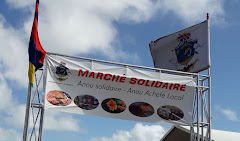

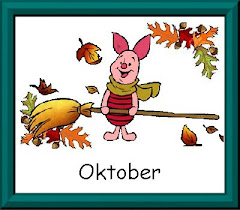





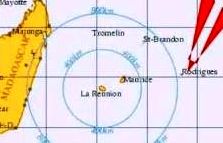
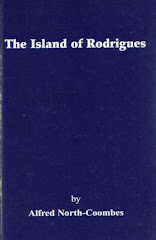
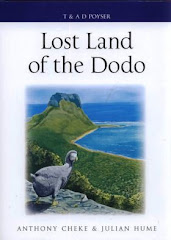
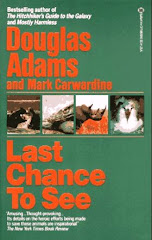




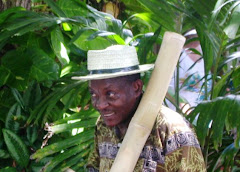
Keine Kommentare:
Kommentar veröffentlichen